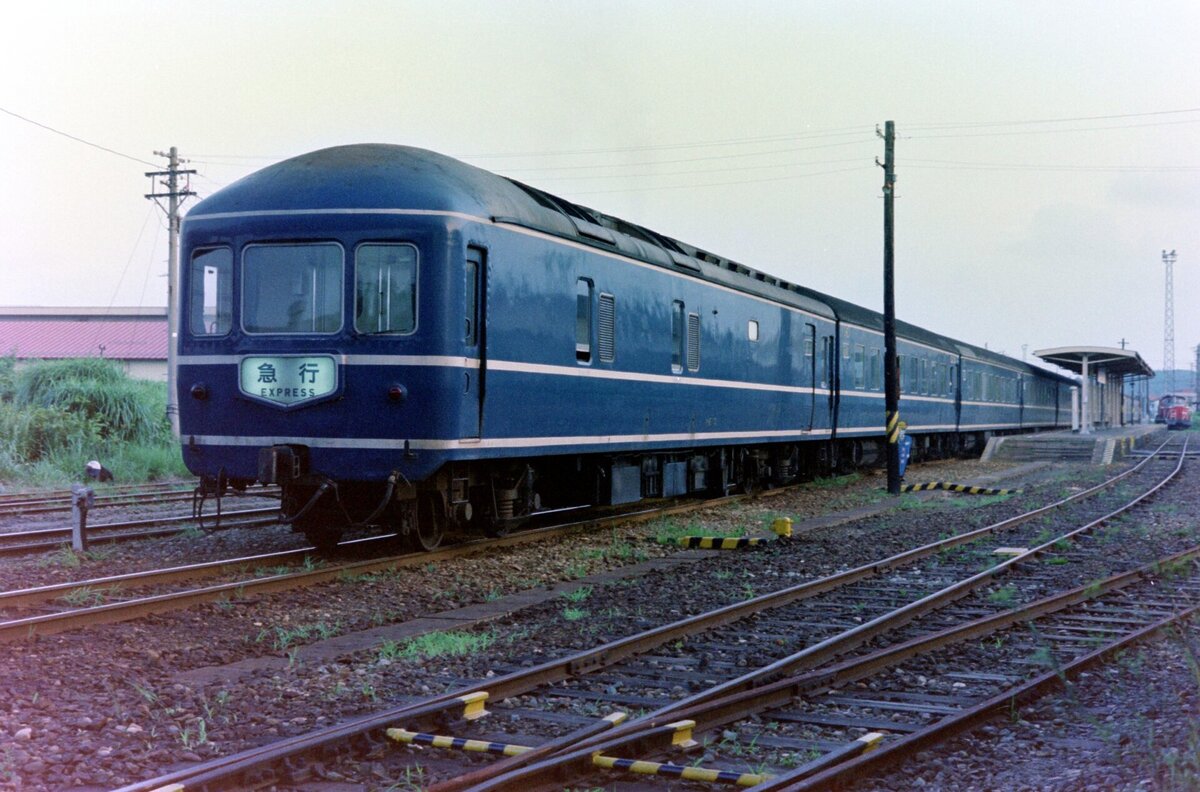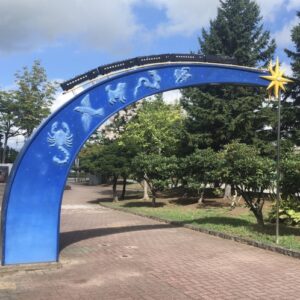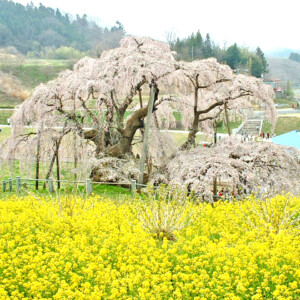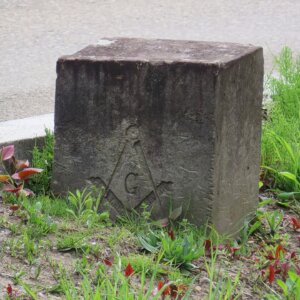
The trail of the express train "Oga" that was connected to Ueno and Akita, which had a strong demand [Akita Prefecture]
table of contents
When traveling by train from Ueno Station in Tokyo to Akita Station in Akita Prefecture, most people will board
Komachi In the days before the Shinkansen, people would have used limited express trains on conventional lines, but unlike today, limited express trains up until around the 1970s were truly special trains that not everyone could easily use. In
the days when limited express trains were not common, one of the trains to get to Akita was the express train "Oga," which we will introduce here.
The birth of the express train "Oga"
The express " Oga " was first introduced in October 1961. It was an upgraded overnight local train
that connected Ueno Station and Akita Station via the Tohoku Main Line and Ou Main Line (stopping at stations such as Omiya, Utsunomiya, Fukushima, and Yamagata along the way) to an express.
The Tsugaru that connects Ueno Station and Aomori Station on the Tohoku Main Line and Ou Main Line with " thereby alleviating congestion on the " Tsugaru
In October 1963, the name was changed from "Oga" to
Oga At the same time, one round trip overnight local train was upgraded to the overnight express "Oga," meaning that "Oga" now runs two round trips per day.
However, just two years later, in October 1965, the Oga's one round trip section was extended to run between Ueno Station and Aomori Station, and the service was incorporated into the Tsugaru service.
Oga was returned to one round trip per day.
The Ou Main Line, which is the route the "Oga" runs on, has several stations with unusual names and stations that are difficult to read.
Please see this article for details.
Oga's heyday
The famous October 1968 timetable revision (the Yon San Tou revision) brought about a major change in the Oga service.
Two round trips were added, bringing the total number of round trips to three per day.
Up until now, all "Oga" trains had been night trains pulled by a locomotive carrying passenger cars such as sleeping cars, passenger cars, and baggage cars, but one of the additional trains was a daytime train using self-propelled diesel railcars.
Even though they are express trains that run on the same route, it is difficult for those of us who do not live at the time to understand why night trains and daytime trains, which have completely different vehicle facilities and user needs, are given the same nickname.

Author: Mitsuki-2368 – Own work, CC BY 3.0
, https://commons.wikimedia.org/w/index.php?curid=3365513
In addition, another additional round trip was an overnight train, and its operating area was extended to Odate Station on the Ou Main Line in northern Akita Prefecture
The night trains that had been operating before the timetable change were extended for a limited time, and now extend their service to Oga Station on the Oga Line that runs through the Oga Peninsula. This
means that the train has finally set foot on the Oga Peninsula, the origin of its name.
The timetable for the Oga in October 1968, when the service was at its peak, is shown below (departure times for major stations only)
| 6401D | 6401 | 403 | Train number | 6402D | 404 | 6402 |
| Oga No. 1 (daytime service) | Oga No. 2 (night train) | Oga No. 3 (night train) | ↓ ↑ | Oga No. 1 (daytime service) | Oga No. 2 (night train) | Oga No. 3 (night train) |
| 7:04 | 20:04 | 21:15 | Ueno | 21:31 | 6:50 | 9:24 |
| 7:30 | 20:34 | 21:43 | Omiya | 21:05 | 6:21 | 8:52 |
| 8:31 | 21:44 | 22:49 | Utsunomiya | 19:59 | 5:16 | 7:32 |
| 10:27 | 23:35 | 0:55 | Koriyama | 18:07 | 3:22 | 5:20 |
| 11:12 | 0:23 | 1:54 | Fukushima | 17:24 | 2:30 | 4:13 |
| 13:24 | 2:41 | 4:01 | Yamagata | 15:10 | 0:31 | 1:44 |
| 14:38 | 3:57 | 5:15 | Shinjo | 13:54 | 23:12 | 0:32 |
| 16:09 | 5:34 | 7:03 | Yokote | 12:20 | 21:28 | 22:47 |
| 17:20 | 7:08 | 8:54 | Akita | 11:10 | 19:50 | 21:20 |
| 8:59 | —- | Odate | —- | 18:55 | ||
| 9:52 | Oga | 18:20 |
In addition to the fact that the "Oga" alone had three round trips, the overnight express "Tsugaru" that ran between Ueno Station and Aomori Station could also be used to access Akita, and the daytime limited express "Tsubasa" also ran along the same route as the "Oga."
There was also the express "Chokai" that ran between Ueno Station and Akita Station along the Sea of Japan coast (this train also had daytime and overnight services), and in October 1969, the daytime limited express "Inaho" also began operating on the same route.
Nowadays, the only option for accessing Akita from the Tokyo metropolitan area is the Akita Shinkansen "Komachi," but back then there were many more options.
Oga continues to be at the mercy of other trains
In 1970, the sleeper express "Akebono" was launched as a special train, connecting Ueno Station and Akita Station via the same Ou Main Line as "Oga," and soon after became a regular train running between Ueno Station and Aomori Station. The
"Oga" regular night train was upgraded to the "Akebono," and was discontinued, and the system was changed to one round trip regular daytime train and one round trip seasonal night train.
Also, according to the timetable from this time, it can be seen that extended service of night trains to Oga Station had become commonplace.

Shellparakeet – Own work, CC0,
https://commons.wikimedia.org/w/index.php?curid=33088758
We also have an article featuring night trains that connect Ueno Station and Aomori Station, such as the express "Tsugaru" and the sleeper express "Akebono," so please take a look at that as well
In October 1975, the electrification of the Ou Main Line (the installation of facilities to supply electricity to trains) was completed (*), so the carriages of the daytime diesel train "Oga" could have been changed to electric trains, but they continued to operate with diesel railcars. This
is thought to have been due to factors such as a shortage of electric railcars that could be used for express trains, but whatever the reason, the operation format of diesel railcars running under overhead wires (electric lines) on the entire section from Ueno Station to Akita Station continued until the daytime "Oga" was discontinued.
*Some sections of the Ou Main Line are currently out of service due to damage caused by heavy rains in July 2024. When the affected sections are restored, the electrification equipment will be removed, and the line will no longer be fully electrified
With the timetable revision in October 1980, the passenger cars of the overnight "Oga" train, which also had sleeping cars attached, were changed to 14-series passenger cars, and the sleeping cars were no longer provided

Author: Rsa – Photographed by Rsa at Kyoto Station, CC BY 3.0
, https://commons.wikimedia.org/w/index.php?curid=3778217
With the opening of the Tohoku Shinkansen and Joetsu Shinkansen in 1982, a large-scale reorganization of the limited express and rapid trains running on conventional lines in the Tohoku region was carried out.
With the timetable revision on November 15th in conjunction with the full-scale opening of the Shinkansen, the daytime "Oga" was discontinued.
It had only been in operation for a short period of 14 years since its introduction in 1968, and was consistently operated by diesel railcars until the very end.
At its peak, the "Oga" operated three round trips per day, but now only one seasonal night train remains.

Author : Olegushka – Own work, CC0,
https://commons.wikimedia.org/w/index.php?curid=144503511
The remaining seasonal night trains had their passenger cars replaced with 20-series passenger cars in July 1983, and sleeping cars were reinstated.
However, with the timetable revision on March 14, 1985, which accompanied the extension of the Tohoku Shinkansen line to Ueno Station, the trains were downgraded to special trains, meaning the number of days they operated was significantly reduced.
However, as special trains, they still seemed to operate quite frequently.
Demand remains strong even after the special train service was introduced
Even after the privatization of the Japanese National Railways into individual JR companies in 1987, the special night express "Oga" continued to operate for a while.
In 1991, construction work was carried out on a section of the Ou Main Line to allow Yamagata Shinkansen trains to pass through, and existing vehicles were no longer able to use the line. As a result, the Oga's route was changed to via the Tohoku Main Line, Kitakami Line (a line connecting Kitakami Station in Iwate Prefecture and Yokote Station in Akita Prefecture), and Ou Main Line. However, there was enough demand to justify the change in route to continue operating the service.
It appears that the service continued until around the beginning of 1995, but since then it has not operated at all as a special train between Ueno Station and Akita Station.
For more information on how the Yamagata Shinkansen came to be, please see this article
In 2013, the "Oga" Sleeper Express was operated as a special overnight train for group travel, departing from Yokohama Station in Kanagawa Prefecture and heading to Akita Station
The Oga also saw a revival in service in the spring of 2018.
A diesel locomotive towed 12-series passenger car made one round trip during the day from Yuzawa Station on the Ou Main Line to Oga Station on the Oga Line, a service that was very different from the Oga that previously operated, but many railway fans enjoyed riding and photographing the nostalgic train.
The Oga was a train that continued to run while being heavily influenced by other trains such as the Tsugaru, Akebono, and Tohoku Shinkansen, but even after its regular service ended, it continued to operate as a seasonal and special train, which shows that there was strong demand for it as an access train to Akita
The fact that it has been revived several times means that it is a train that has left a lasting impression on railway fans, and
it is possible that it may be operated again in the future on some other occasion.






![Abolished in just one year! ? The extraordinary express train "Akita Relay" [Iwate Prefecture/Akita Prefecture] Akita-relay](https://jp.neft.asia/wp-content/uploads/2024/09/Akita-relay-150x150.jpg)
![A trip to Doroyu Onsen in Akita Prefecture, depicted in the 31st trip of the manga "That's Journey" [Akita Prefecture] 30422261_m](https://jp.neft.asia/wp-content/uploads/2025/11/30422261_m-150x150.jpg)
![[JR East Pass Trip: Day 3] A day trip to Aomori Bullet Tour to foster your energy at home! Tsugaru Kokeshi at Shin-Aomori Station](https://jp.neft.asia/wp-content/uploads/2022/12/IMG_3878-1200x675-1-150x150.jpg)
![Appearing in Episode 2 of the anime "That's Journey"! How do you get to Matsushima, one of Japan's Three Most Viewed Places? [Miyagi Prefecture] Matsushima](https://jp.neft.asia/wp-content/uploads/2025/07/27869135_s-150x150.jpg)

![Hot springs gush out in a place where there are no volcanoes! "Yuzawa Geopark" where you can see the mystery of the earth up close [Akita Prefecture] 4550228_m](https://jp.neft.asia/wp-content/uploads/2023/02/4550228_m-150x150.jpg)
![[JR East Pass Trip: Part 2 of Day 1] Strolling around Akita City on the first day, delicious local sake and local cuisine! Giant Akita dog at Akita Station](https://jp.neft.asia/wp-content/uploads/2022/11/IMG_3762-1200x675-1-150x150.jpg)
![From diesel express trains to bullet trains... The path of Tsubasa [Akita Prefecture and Yamagata Prefecture] 22566129_m](https://jp.neft.asia/wp-content/uploads/2024/06/22566129_m-150x150.jpg)











